Brood X Magicicada photo by Fred Berry from 2004. Parts unknown.
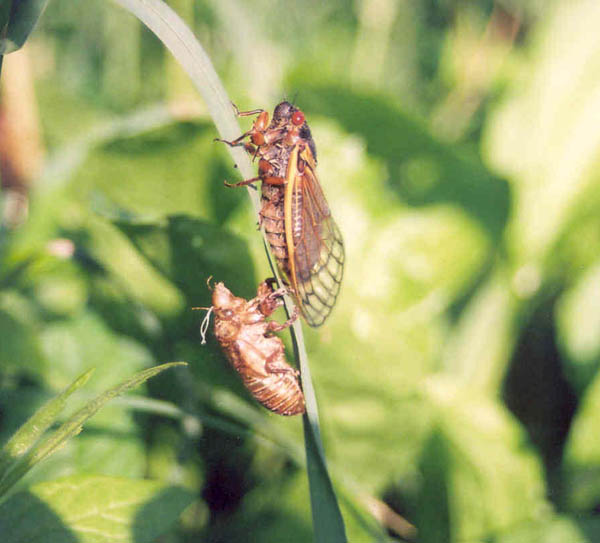
Magicicada periodical cicada Broods.
Brood X Magicicada photo by Fred Berry from 2004. Parts unknown.

Brood X Magicicada photos by Mark Goldberg from 2004. Maryland.
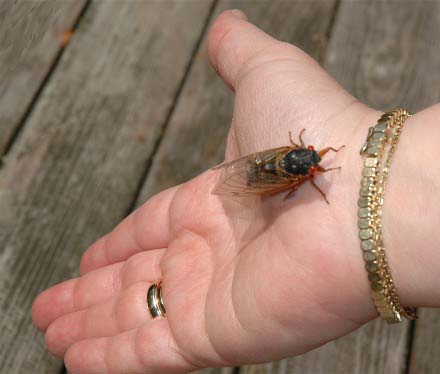
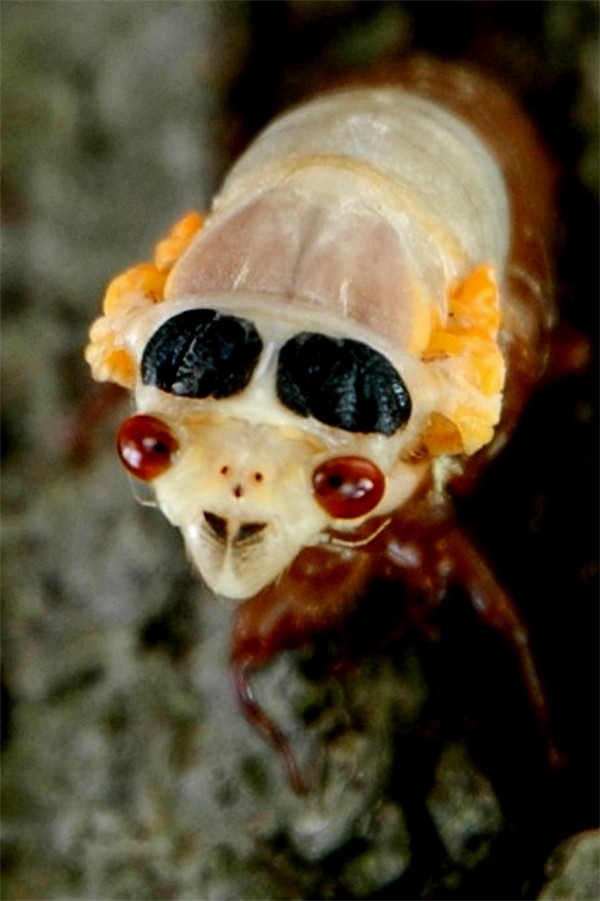
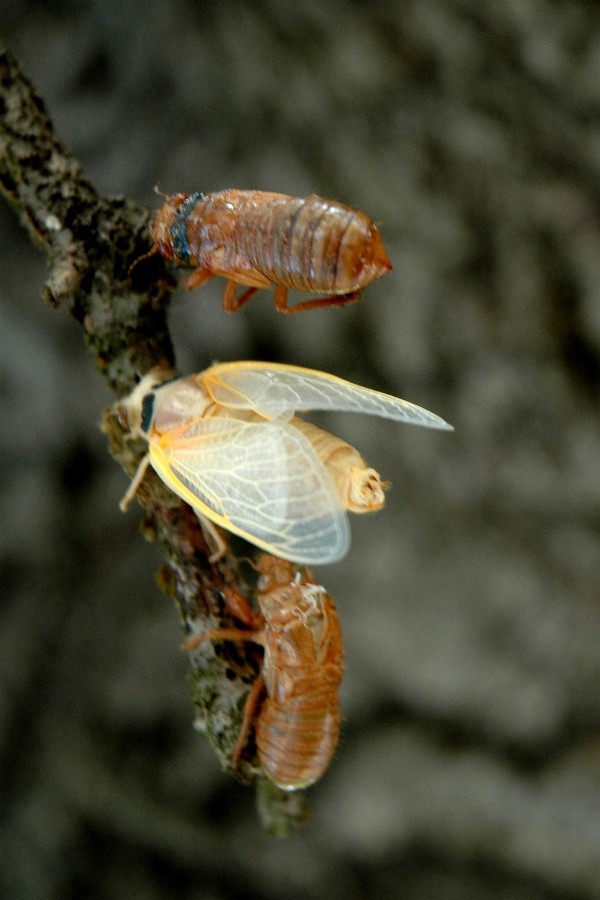
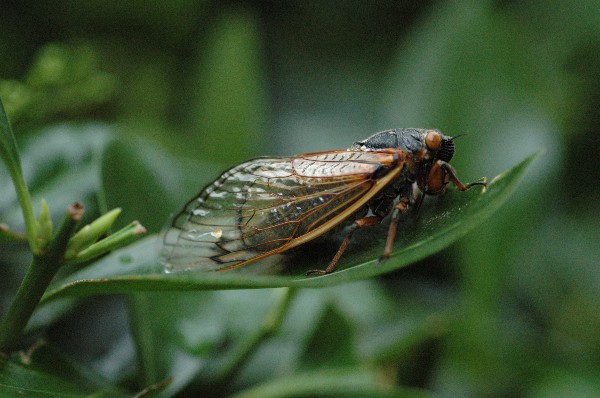
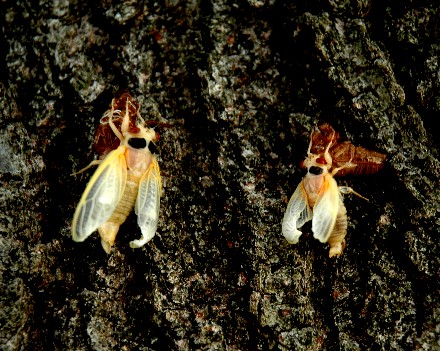
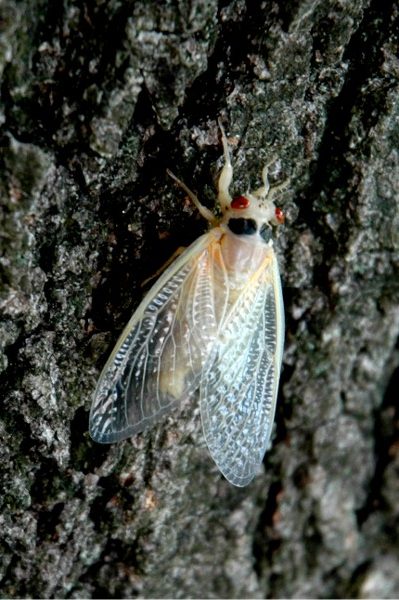
Brood X Magicicada photos by Phil Smith from 2004. Indiana.
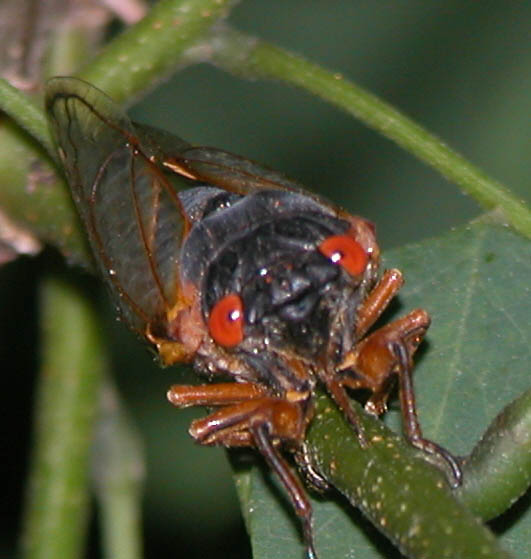
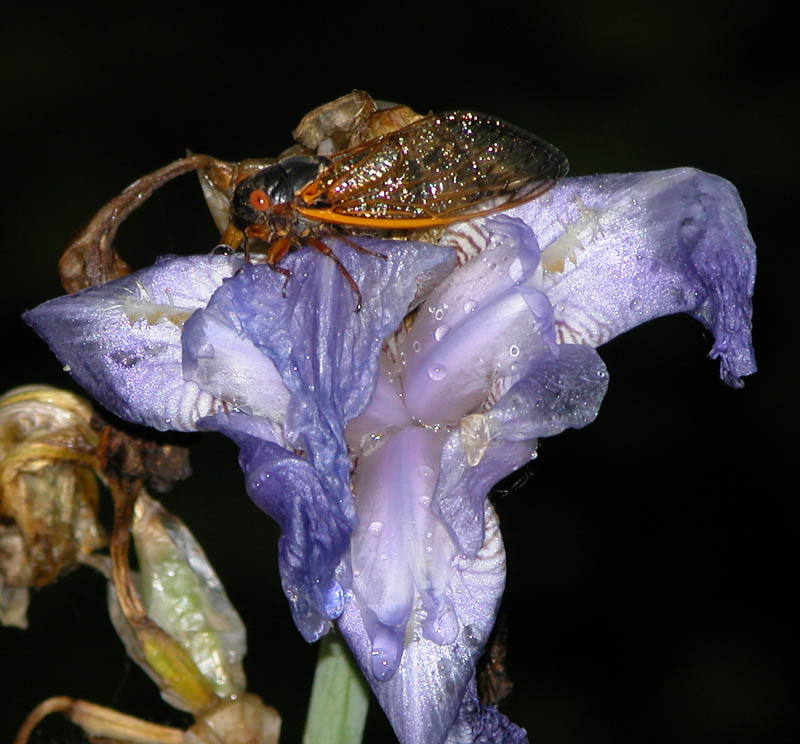
Magicicada Brood X photo by Frank Mefford from 2004. Kentucky.
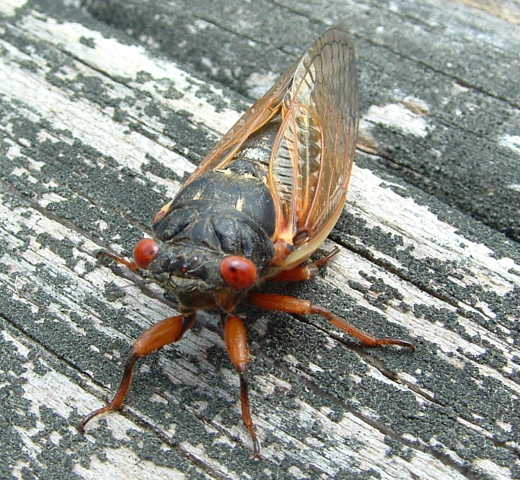
Magicicada Brood X photo by Walter Hanig from 2004. Washington, D.C.
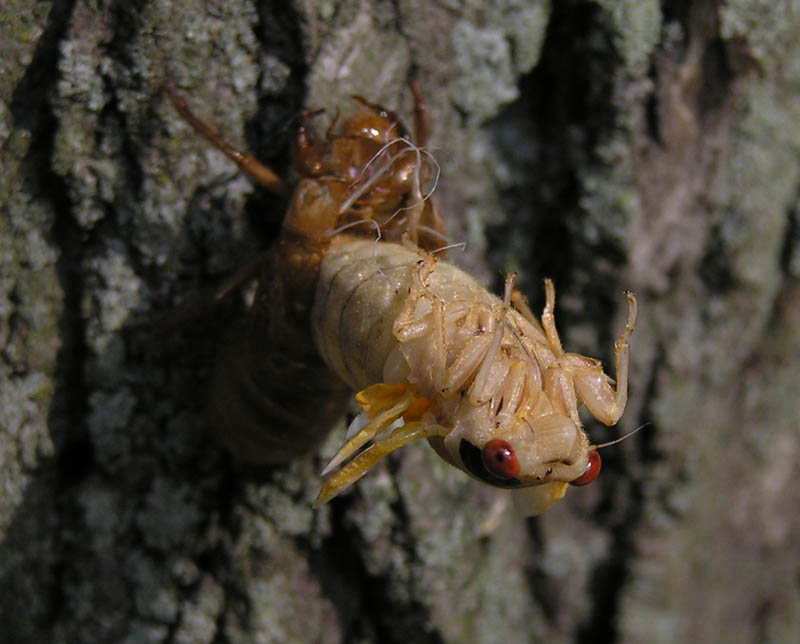
Magicicada Brood X photos by Steve Groh from 2004. Cincinnati, Ohio.
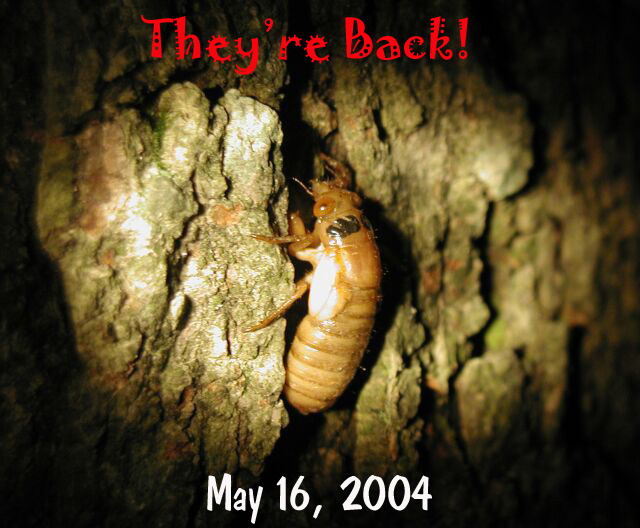
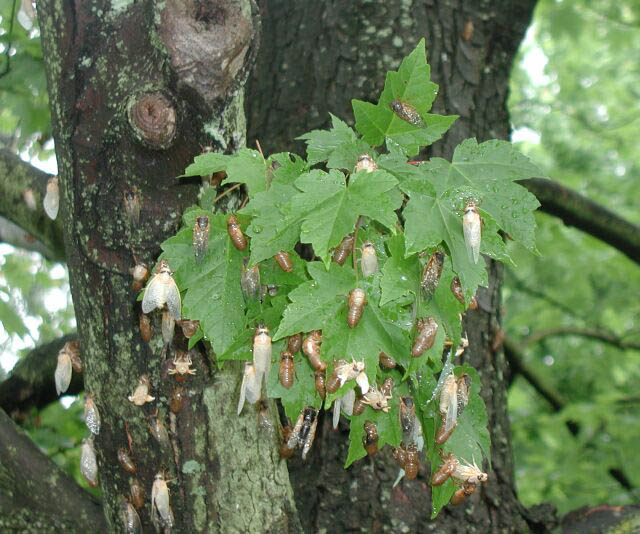
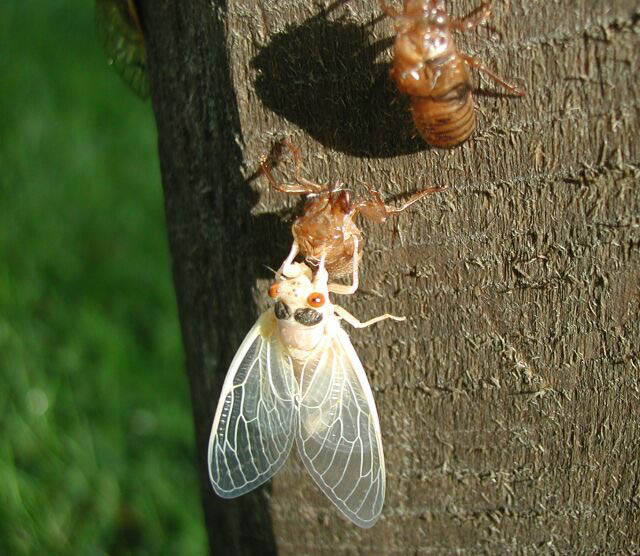
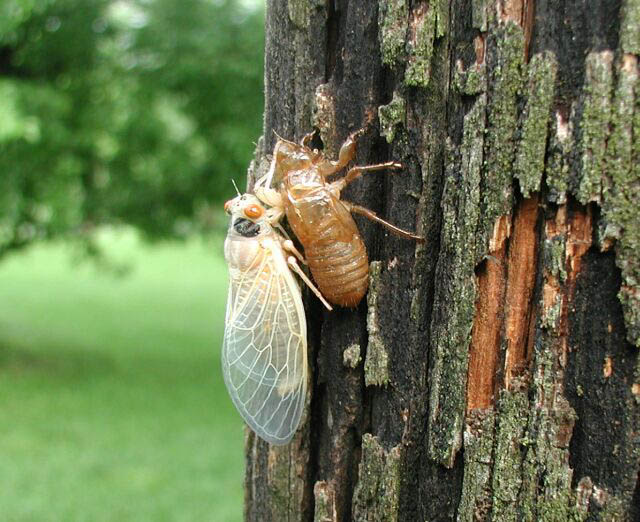
Photos of Magicicada cicadas with white & blue eyes by Roy Troutman from 2004.
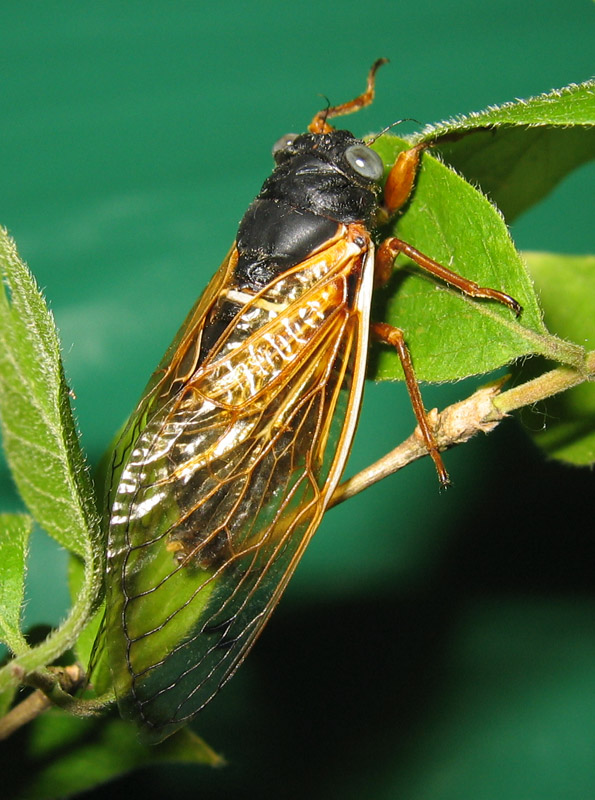
Photo of a Magicicada cicada with blue eyes by Roy Troutman.
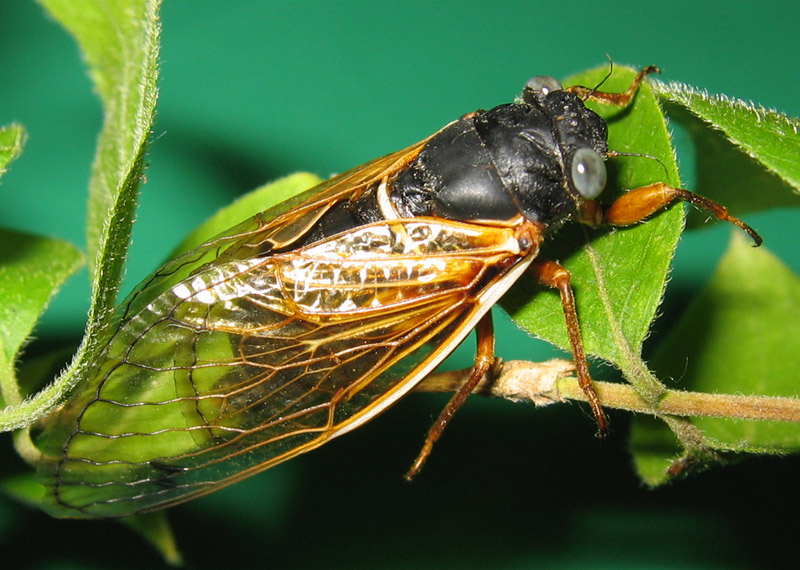
Photo of a Magicicada cicada with blue eyes by Roy Troutman.
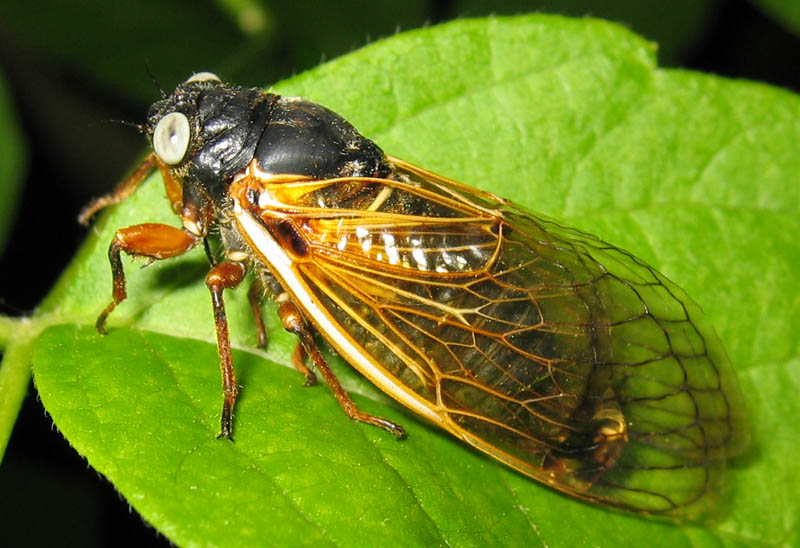
Photo of a Magicicada cicada with white eyes by Roy Troutman.
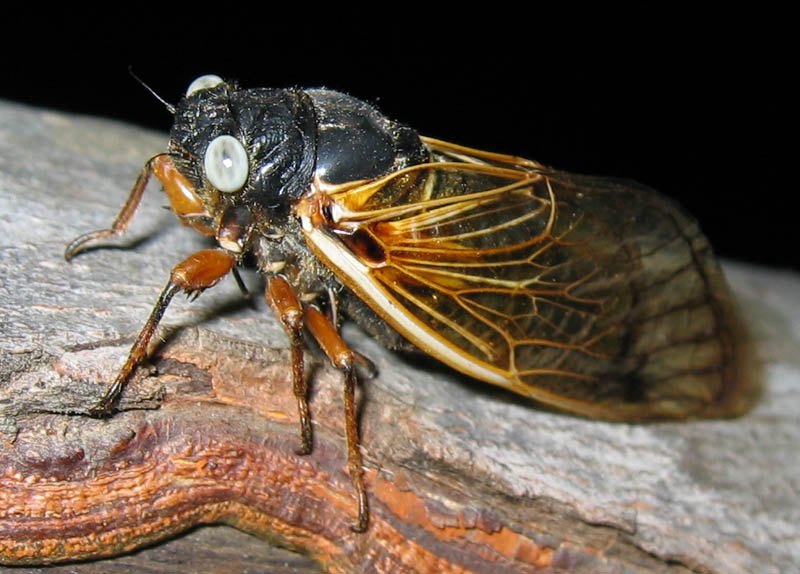
Photo of a Magicicada cicada with white eyes by Roy Troutman.
This year Brood VIII periodical cicadas emerged in the Pittsburgh area, and I traveled to see and map them. Unfortunately, I only had 3 days, so I only saw the western side of the Brood.
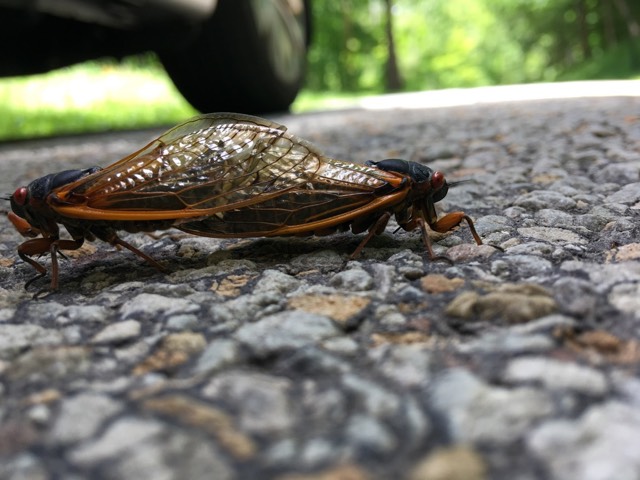
All things considered — including cool, cloudy weather (which cicadas don’t like as much as hot & sunny) and a very rainy spring — Brood VIII was the least impressive brood I’ve witnessed, in terms of the sheer number of cicadas. I hope no one in the Pittsburgh area takes offense to that statement — Brood VIII is your brood, and you should be proud of it. It is just that as we humans build more and more, and continue to alter the environment, the numbers of cicadas will steadily dwindle. and I think we’re seeing that happen to Brood VIII.
Here’s an impromptu map of the places I saw cicadas:
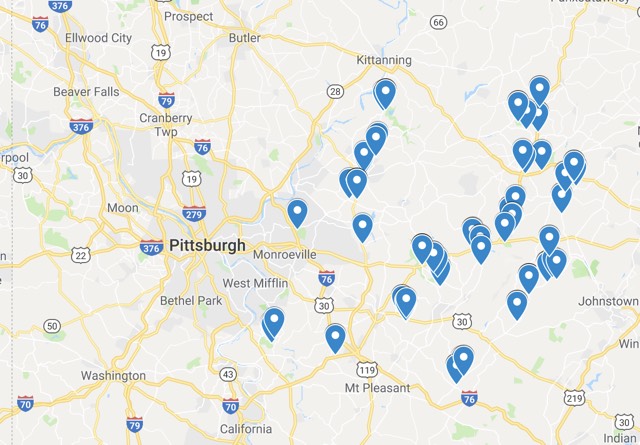
And a list of places:
And some photos:
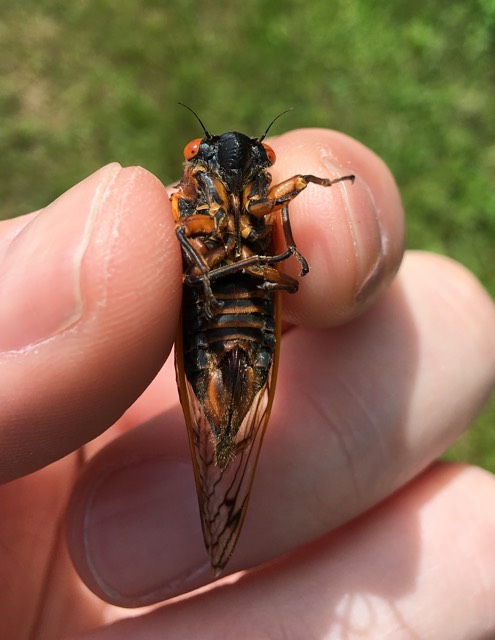
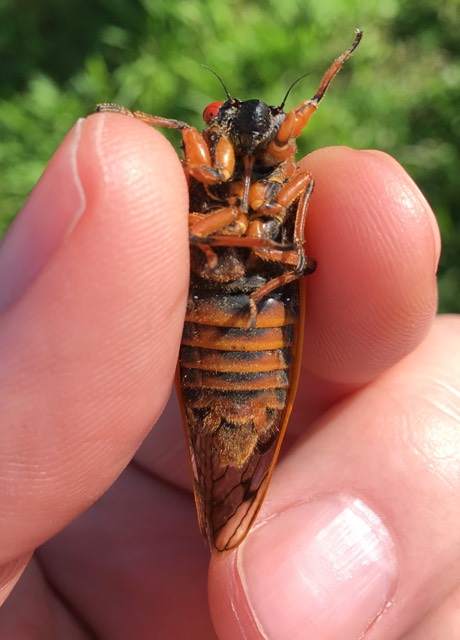
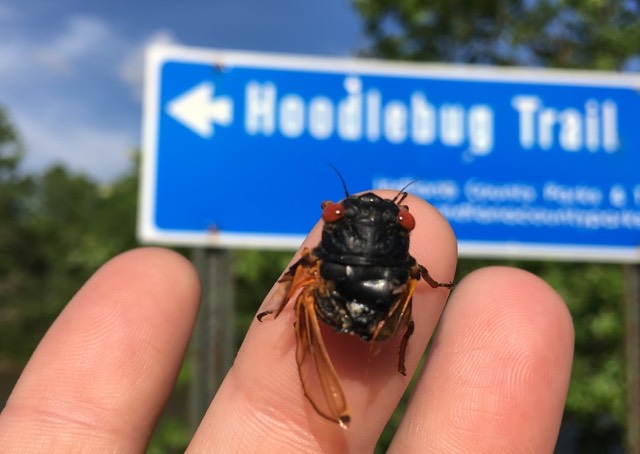
Video of the amazing cicada that was just a head.
A very cool Brood VIII cicada frisbee:
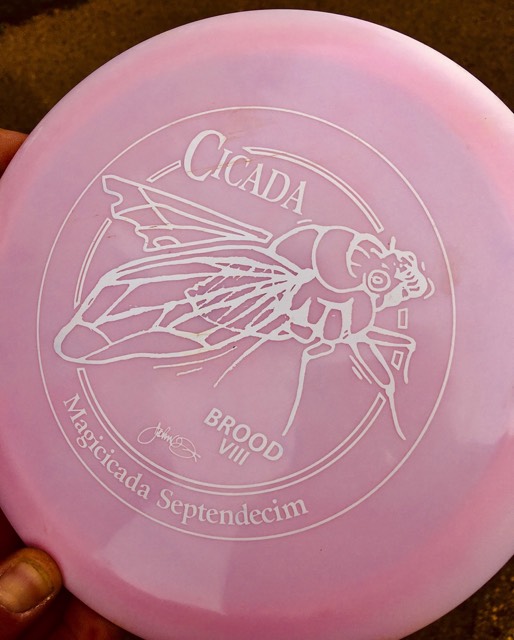
Brood VIII will next emerge in 2036.
Periodical cicada Brood VIII (Eight) has emerged in 2019 in western Pennsylvania, eastern Ohio, and the tip of the northern panhandle of West Virginia, as well as Oklahoma (which was unexpected). The last time this brood emerged was in 2002.
What, when, where, and why:
What:
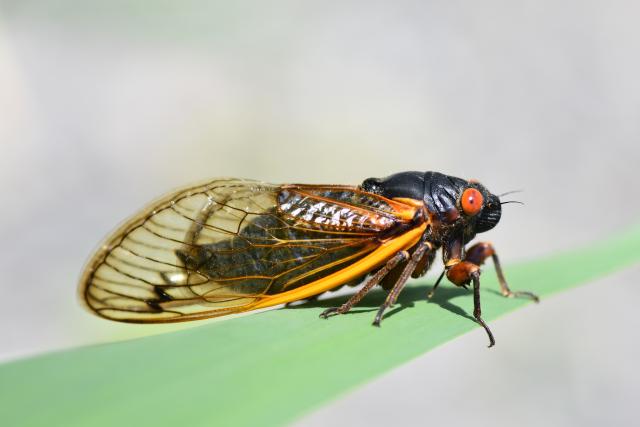
When: Typically beginning in mid-May and ending in late June. These cicadas will begin to emerge approximately when the soil 8" beneath the ground reaches 64 degrees Fahrenheit. A nice, warm rain will often trigger an emergence.
Other tips: these cicadas will emerge after the trees have grown leaves, and, by my own observation, around the same time Iris flowers bloom.
Where:
Cicadas @ UCONN has the most up to date maps, including this modernized Google map.
You can report cicada sightings using the Cicada Safari App, available for iPhones/iOS and Android phones. The app helps you identify periodical cicada species, take photos and add your findings to a map.
More Location Tips:
Visually, the cities mentioned above look like this: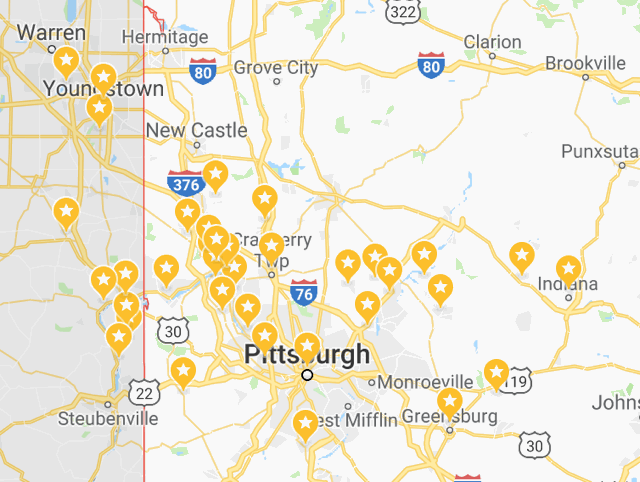
Why: Why do they emerge in massive numbers every 17-years? In a nutshell, the long life cycle has helped them avoid gaining a specific above-ground predator, and the massive numbers allow them to satiate predators in general, allowing enough to survive and reproduce.
Bonus content:
Video of newly emerged periodical cicada nymphs:
Magicicada cicada nymph mania from Cicada Mania on Vimeo.
More facts and fun:
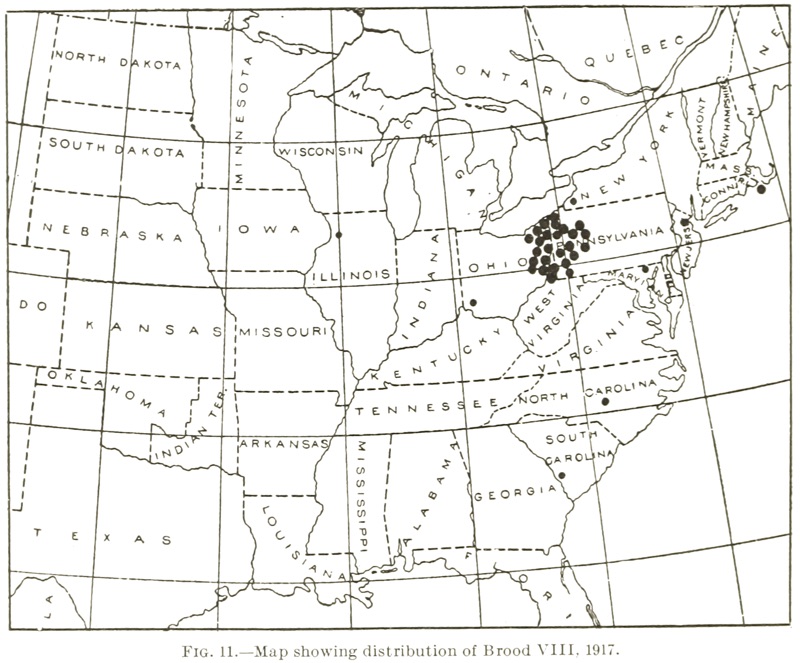
Note: I originally took this article down because embedding Google Trends slowed down the loading of the page. I’m republishing without the embeds.
This article was inspired by Serious Fun with Google Trends by Simon Leather.
Google Trends is a Google website that lets you see trends in the search terms over time. When people search for “cicada” it usually means cicadas have emerged in their area at the time they search.
The following graph shows when people searched for “cicada” over the past 10 years in the United States. The largest spike, in May of 2004, coincided with the emergence of Brood X. See it on Google Trends.

You might think that periodical cicada emergences cause the largest spikes, but not always — and not just because periodical cicadas don’t emerge every year.
2004: Cicada searches spiked May 16-22, which was Brood X — Magicicadas.
2005: Jul 31-Aug 6 spike which was for Neotibicen Cicadas. No periodical cicadas.
2006: Aug 13-19, Neotibicen Cicadas. No periodical cicadas.
2007: May 20-26, Brood XIII — Magicicadas.
2008: Brood XIV Magicicadas emerged (spike Jun 8-14), but the largest spike was Jul 29-Aug 2, Neotibicen Cicadas.
2009: Aug 16-22, Neotibicen Cicadas.
2010: Aug 8-14, Neotibicen Cicadas.
2011: May 29-Jun 4, Brood XIX — Magicicadas.
2012: Jul 29-Aug 4, Neotibicen Cicadas.
2013: May 5-11, Brood II — Magicicadas.
2014: Brood XXII — Magicicadas had a relatively small spike May 25-31, compared with Aug 24-30 for Neotibicen Cicadas (late season due to cool weather). There was also a teeny bit of a spike around January of 2014 due to the “cicada 3301” meme/game.
2015: Brood XXIII & IV Magicicadas emerged (spike around Jun 7-13), but the largest spike was around Aug 9-15 for Neotibicen Cicadas.
Which cities had the most cicada searches over the past 14 years? Nashville, Baltimore, Cincinnati, Arlington, Washington, Alexandria, Pittsburg, St. Louis, Columbus, and Chicago. Time to move to Nashville.
In Australia, searches for “cicadas” peaks in December (summertime in Australia). It looks like there is a year-over-year pattern arising as well, with peaks every 4 years (2009, 2013, 2017) particularly, if you drill down to New South Wales.
In Japan, searches for “セミ” peaks in August.
Now I know when to visit these countries. 🙂
Try it yourself.